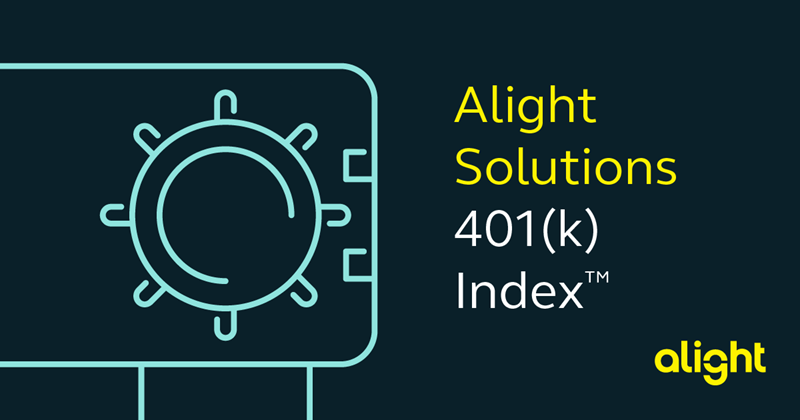
Trading activity cooled slightly in February with just four above-normal1 days, compared to eight above-normal1 days in January, according to the Alight Solutions 401(k) IndexTM. Investors favored fixed income funds on 12 of 20 days. Large U.S. equity (55%), bond (23%) and stable value (13%) funds saw the most inflows, while target date funds2 (33%), company stock (17%) and money market (13%) experienced the most outflows. New contributions to equities rose from 69.2% in January to 69.6% in February, while average asset allocation in equities increased from 70.7% to 71.4%, the highest since January 2001.
February observations:
- On average, 0.012% of 401(k) balances were traded daily.
- 12 of 21 days favored fixed income funds.
| |||||||||||||||||||||||
Inflows and outflows during the month of February:
- Trading inflows mainly went to large U.S. equity, bond and money market funds.
Outflows were primarily from target date2, company stock and small U.S. equity funds.
Asset classes with most trading inflows in February | Percentage of inflows | Index dollar value ($mil) |
| Large U.S. equity funds | 55% | $233 |
Bond funds | 23% | $99 |
| Money market funds | 13% | $54 |
Asset classes with most trading outflows in February | Percentage of outflows | Index dollar value ($mil) |
Target date funds2 | 33% | $141 |
Company stock | 17% | $72 |
| Small U.S. equity funds | 15% | $64 |
February investment portfolios:
- After reflecting market movements and trading activity, average asset allocation in equities increased from 70.7% in January to 71.4% in February.
- New contributions to equities increased from 69.2% in January to 69.6% in February.
Asset classes with largest percentage of total balance at the end of February | Percentage of balance | Index dollar value ($mil) |
Target date funds2 | 31% | $80,094 |
Large U.S. equity funds | 28% | $74,796 |
Stable value funds | 7% | $17,732 |
Asset classes with most contributions in February | Percentage of contributions | Index dollar value($mil) |
Target date funds2 | 47% | $881 |
Large U.S. equity funds | 23% | $426 |
International equity funds | 7% | $131 |
Returns for common indices | February | 2024 YTD |
Bloomberg Barclays Capital U.S. Aggregate Bond Index | -1.41% | -1.68% |
S&P 500 Index | 5.34% | 7.11% |
Russell 2000 Index | 5.65% | 1.54% |
MSCI All Country World ex-U.S. Index (net) | 2.53% | 1.51% |
1 A “normal” level of relative transfer activity is when the net daily movement of participants’ balances, as a percent of total 401(k) balances within the Alight Solutions 401(k) Index™, equals between 0.3 times and 1.5 times the average daily net activity of the preceding 12 months. A “high” relative transfer activity day is when the net daily movement exceeds two times the average daily net activity. A “moderate” relative transfer activity day is when the net daily movement is between 1.5 and 2 times the average daily net activity of the preceding 12 months.
2 Target date funds also include the amounts in target risk funds. The amount in the target risk funds is less than 10% of the total.

Want to know more?
Check out our previous reports
